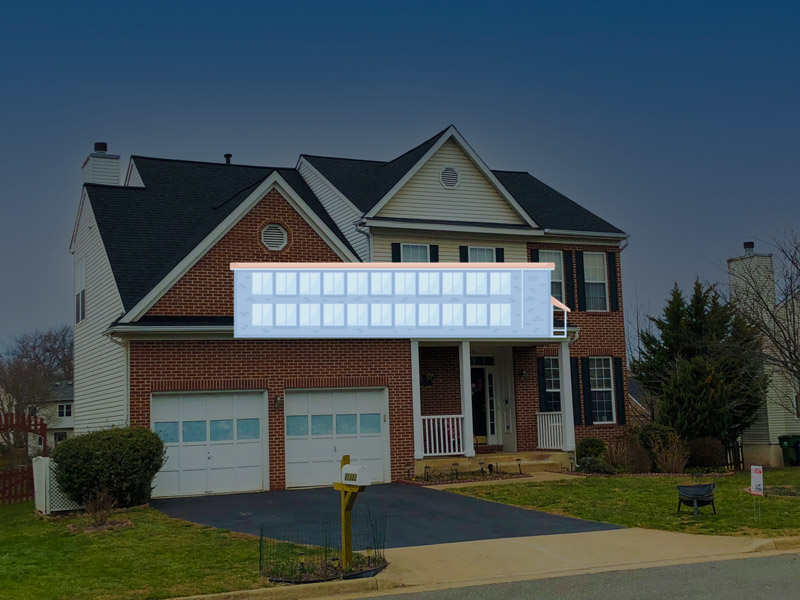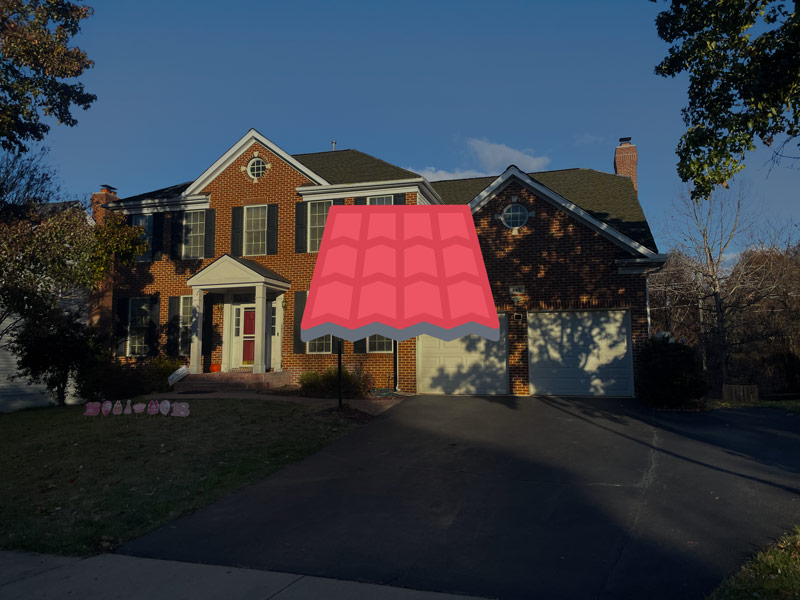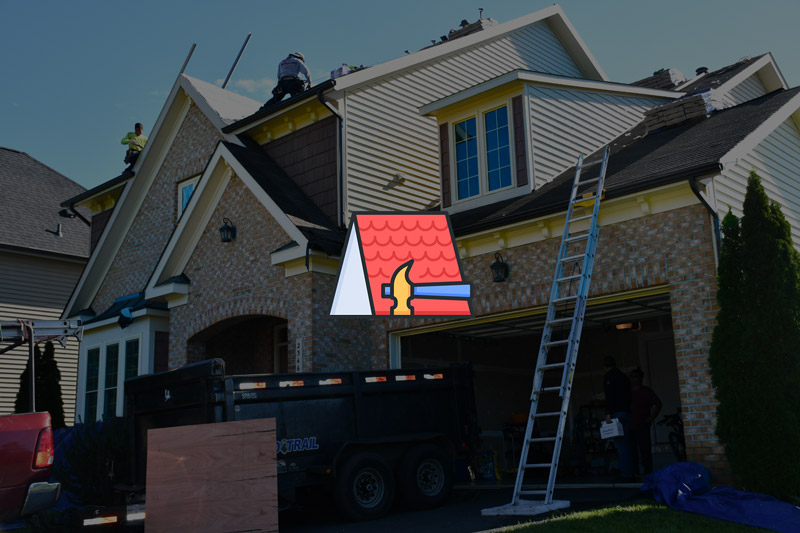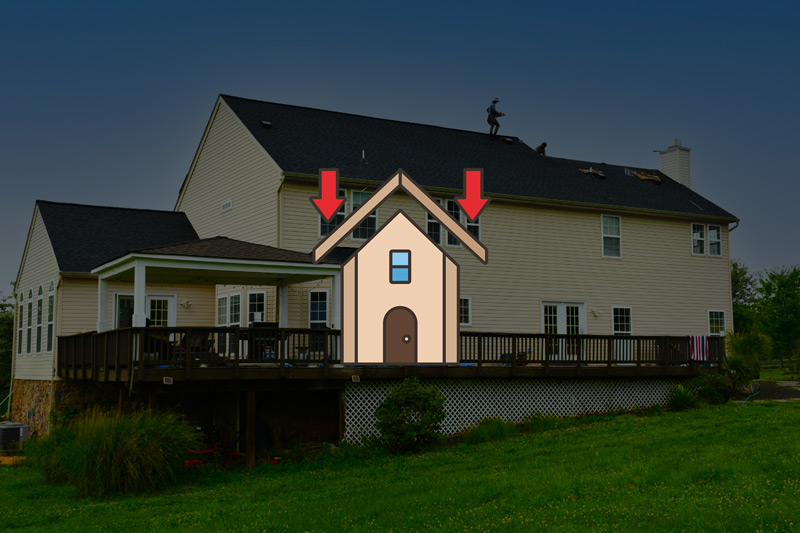Flat vs. Pitched Roof: Choosing the Right Design for Your Home
Flat roofs, also referred to as low-slope roofs or horizontal roofs, feature a low or nearly level slope, differing from the steep pitch of traditional pitched roofs. These roofs exhibit a sleek and contemporary profile, often associated with modern architecture and urban designs. The minimal incline allows for a streamlined appearance that seamlessly integrates into various architectural styles, from minimalistic to industrial.

Understanding Flat Roofs
Advantages of Flat Roofs: Space Utilization, Accessibility, and Modern Aesthetic
Flat roofs, or low-slope roofs, offer an array of advantages that appeal to homeowners and designers alike. One key benefit is efficient space utilization. The horizontal expanse can be transformed into valuable outdoor living areas, rooftop gardens, or even solar panel installations. This utilization of otherwise unused space is particularly advantageous in urban environments where square footage is precious.
Additionally, flat roofs provide easy accessibility for maintenance and repairs. Contractors can navigate the roof surface without the need for intricate scaffolding or special equipment, simplifying upkeep tasks. The modern aesthetic of flat roofs aligns with contemporary design trends, contributing to a visually striking and innovative look for buildings.
Challenges and Considerations: Drainage, Maintenance, and Insulation
Despite their merits, flat roofs, also known as low-slope roofs, come with unique challenges. Proper drainage is critical to prevent water pooling, which can lead to leaks and structural issues. Adequate sloping and efficient drainage systems are essential considerations in the design and construction of flat roofs. Maintenance demands attention to prevent debris buildup and to ensure water flows appropriately.
Insulation is another consideration for flat roofs, or horizontal roofs. Due to their horizontal nature, they are more exposed to direct sunlight, leading to increased heat absorption. This calls for robust insulation solutions to regulate indoor temperatures, prevent energy loss, and maintain comfort throughout the seasons.

Exploring Pitched Roofs
Definition and Features of Pitched Roofs
Pitched roofs, also known as sloped or angled roofs, are characterized by their steep incline that allows for effective water runoff. Unlike flat roofs, pitched roofs exhibit a dynamic visual appeal and have been a staple in architectural history for their enduring charm and functionality. The slope angle can vary, influencing both the aesthetics and the practicality of the roof.
Benefits of Pitched Roofs: Efficient Water Drainage, Classic Design, and Versatility
Pitched roofs, or sloped roofs, offer a range of benefits that have made them a popular choice across diverse climates and architectural styles. One key advantage is their exceptional water drainage capability. The steep slope facilitates rapid water runoff, minimizing the risk of leaks and water damage. This efficiency in drainage is particularly advantageous in regions with heavy rainfall or snowfall.
Classic design is another hallmark of pitched roofs, also referred to as angled roofs. Their traditional appearance not only exudes timeless elegance but also seamlessly complements a wide array of architectural designs. This versatility allows homeowners to achieve a cohesive look that integrates harmoniously with their chosen style.
Considerations and Challenges: Construction Complexity, Attic Space, and Cost
While pitched roofs, or angled roofs, offer numerous advantages, they come with considerations that must be weighed during the decision-making process. The construction of pitched roofs tends to be more complex compared to flat roofs, demanding skilled craftsmanship and a meticulous approach. The intricacies of framing, trusses, and shingles require careful planning and execution.
Attic space is a consideration unique to pitched roofs, also known as sloped roofs. The incline creates usable attic space that can be leveraged for storage or converted into additional living areas. However, the design of the attic space may be constrained by the roof’s pitch and structure.

Choosing the Right Roof for Your Home
When determining the ideal roofing type for your residential property, several vital factors come into play. These considerations shape the decision-making process, ensuring that the chosen roof, whether flat, pitched, or something in between, aligns seamlessly with your needs and preferences. Let’s delve into the key aspects that heavily influence the choice between a flat vs. pitched roof.
Architectural Aesthetics and Design:
The architectural style you envision for your home plays a pivotal role in selecting the suitable roof. A pitched roof, with its classic and timeless appearance, often complements traditional designs, such as colonial or Victorian homes. On the other hand, a flat roof tends to align better with modern and minimalist architectural concepts, exuding clean lines and contemporary allure. The design direction you choose will significantly impact the visual harmony of your property.
Climate and Weather Considerations:
The climatic conditions of your region exert a significant influence on the roofing decision. Pitched roofs, characterized by their steep slopes, effectively shed rain, snow, and debris, making them an excellent choice for areas prone to heavy precipitation. On the contrary, flat roofs might be more suitable for regions with milder climates. Adequate drainage systems and waterproofing become crucial for flat roofs to prevent water accumulation and potential leaks.
Functionality and Potential Use:
Consider how you intend to utilize the rooftop space. If you envision a rooftop garden, outdoor lounging area, or solar panel installations, a flat roof could offer more accessibility and versatility. Pitched roofs might limit such possibilities due to their steep angles. Additionally, specific design features like skylights or dormer windows may align better with one roof type over the other, impacting the overall functionality and usability of your home’s interior and exterior spaces.
Financial Implications and Long-Term Costs:
Budget constraints are a practical factor in any construction project. While flat roofs tend to have lower initial installation costs, they might incur higher maintenance expenses over time due to potential leakage issues and the need for regular upkeep. On the other hand, pitched roofs, though often pricier to install, boast longer lifespans and fewer maintenance requirements. Consider the long-term cost implications to make an informed decision that balances initial expenses with ongoing maintenance costs.
In essence, the choice between a flat vs. pitched roof rests on a complex interplay of architectural vision, climate realities, functionality needs, and financial feasibility. By thoroughly evaluating these factors, you can make a well-informed decision that aligns your residential roofing choice with your lifestyle, preferences, and the unique characteristics of your location.

Installation and Maintenance
When it comes to the installation and maintenance of residential roofs, understanding the intricacies of both flat and pitched roofs is crucial. Each type demands a tailored approach to ensure longevity, performance, and protection against the elements.
Installation Process:
Installing a flat vs. pitched roof involves distinct processes that cater to their unique characteristics.
Flat Roof Installation:
For flat roofs, proper insulation, waterproofing, and drainage systems are paramount. The installation begins with a robust insulation layer that regulates temperature and energy efficiency. Then, a high-quality waterproof membrane, like EPDM or TPO, is meticulously installed to prevent water infiltration. Proper drainage systems, such as internal slopes or scuppers, play a vital role in diverting water away from the roof surface.
Pitched Roof Installation:
Pitched roofs require a meticulous step-by-step approach. The process includes installing a solid underlayment that acts as a moisture barrier and promotes ventilation. Flashing is then strategically placed around chimneys, vents, and other vulnerable areas to prevent leaks. Roofing materials, be it asphalt shingles, tiles, or metal panels, are layered and affixed following industry best practices. Adequate ventilation systems, such as ridge vents or gable vents, are crucial to maintain airflow within the roof structure.
Maintenance Practices:
Regular maintenance is key to ensuring the longevity and performance of any roof type.
Flat Roof Maintenance:
Flat roofs require diligent upkeep to address potential challenges like pooling water and leaks. Regular inspections are essential to identify any wear and tear in the waterproof membrane or drainage systems. Promptly addressing issues like cracks, punctures, or deteriorating sealants prevents minor problems from escalating into major leaks. Routine cleaning of debris and ensuring proper drainage keeps the roof functioning optimally.
Pitched Roof Maintenance:
Pitched roofs benefit from their natural water-shedding design, but maintenance is still vital. Regular inspections of shingles, flashing, and ventilation components help catch any deterioration early. Damaged or missing shingles should be replaced promptly to prevent water infiltration. Cleaning gutters and ensuring proper attic ventilation maintain the roof’s integrity and prevent issues like moisture buildup and ice dams.

Making an Informed Decision
As you consider the choice between a flat roof and a pitched roof for your residential haven, it’s crucial to distill the insights gained from this exploration.
Key Takeaways:
Reflect on the comprehensive information provided about flat vs. pitched roofs. Delve into the nuances of each roof type’s design, benefits, and challenges. Recognize that architectural aesthetics, climate, functionality, and financial considerations contribute to the dynamic decision-making process.
Balancing Pros and Cons:
Take a deliberate approach to evaluating the merits and drawbacks of flat and pitched roofs in light of your specific circumstances. Consider how each roof type aligns with your architectural vision, lifestyle, and practical needs. Weigh the appeal of a modern, sleek flat roof against the classic charm of a pitched roof, considering aspects like maintenance, longevity, and potential uses.
Consulting with Professionals:
Harness the expertise of roofing professionals to guide your decision. Their industry insights can shed light on the optimal roof type based on your location, climate, and individual requirements. Discuss your aspirations and concerns with them, leveraging their knowledge to tailor your choice to perfection.
The Value of a Thoughtful Decision:
Remember that your chosen roof isn’t just a functional covering—it’s a foundational aspect of your home’s character and protection. A well-informed decision results in a roof that enhances both the aesthetics and functionality of your dwelling. Whether you opt for the sleek lines of a flat roof or the timeless appeal of a pitched roof, the value extends beyond the immediate; it impacts the long-term integrity and allure of your abode.
View More Articles
Please Share!










